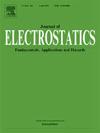论可燃液体的着火危险性:以s -乳酸水溶液为例
IF 2.1
4区 工程技术
Q3 ENGINEERING, ELECTRICAL & ELECTRONIC
引用次数: 0
摘要
同时超过闪点和外部点火源(如静电火花或热点)的存在会导致与火焰相关的场景。然而,如果液体受到热降解,甚至低于闪点,则可以观察到异常行为。这项工作致力于可燃液体危害的具体情况,由于在7千瓦/平方米和50千瓦/平方米范围内的点火源和样品的恒定热通量激活的二次反应的叛乱。为此,用量热法对乳酸含量为90%的水溶液进行了实验分析。用锥形量热仪测定了乳酸池火的液体温度、质量损失率和放热率。结果与文献实验数据和理论数据进行了比较。使用闪点温度(无论采用何种方法进行评估)已被发现在安全方面导致非保守的结果。根据收集到的数据,建议使用锥形量热计来评估暴露于热源(如火)的液体物质的可燃性。本文章由计算机程序翻译,如有差异,请以英文原文为准。
On the ignition hazards of combustible liquid: the case of S-lactic acid water solution
The simultaneous exceedance of the flash point and the presence of an external source of ignition such as electrostatic sparks or hot spots lead to a flame-related scenario. Nevertheless, anomalous behaviour can be observed if the liquid is subject to thermal degradation, even below the flash point. This work is dedicated to the specific case of the hazard of combustible liquids due to the insurgence of secondary reactions activated by an ignition source and a constant heat flux to the sample within the range 7 kW/m2 and 50 kW/m2. To this aim, an aqueous solution having 90 %w lactic acid has been analysed experimentally by calorimetric analysis. The temperature of the liquid, the mass loss rate, and the heat release rate for the pool fire of lactic acid have been measured by a cone calorimeter. Results were compared with experimental data from the literature and theoretical data. The use of flash point temperature (regardless of the approach adopted for its evaluation) has been found to lead to non-conservative results on the safe side. Based on the collected data, the use of a cone calorimeter is recommended to evaluate the ignitability of liquid substances exposed to heating sources such as fires.
求助全文
通过发布文献求助,成功后即可免费获取论文全文。
去求助
来源期刊

Journal of Electrostatics
工程技术-工程:电子与电气
CiteScore
4.00
自引率
11.10%
发文量
81
审稿时长
49 days
期刊介绍:
The Journal of Electrostatics is the leading forum for publishing research findings that advance knowledge in the field of electrostatics. We invite submissions in the following areas:
Electrostatic charge separation processes.
Electrostatic manipulation of particles, droplets, and biological cells.
Electrostatically driven or controlled fluid flow.
Electrostatics in the gas phase.
 求助内容:
求助内容: 应助结果提醒方式:
应助结果提醒方式:


